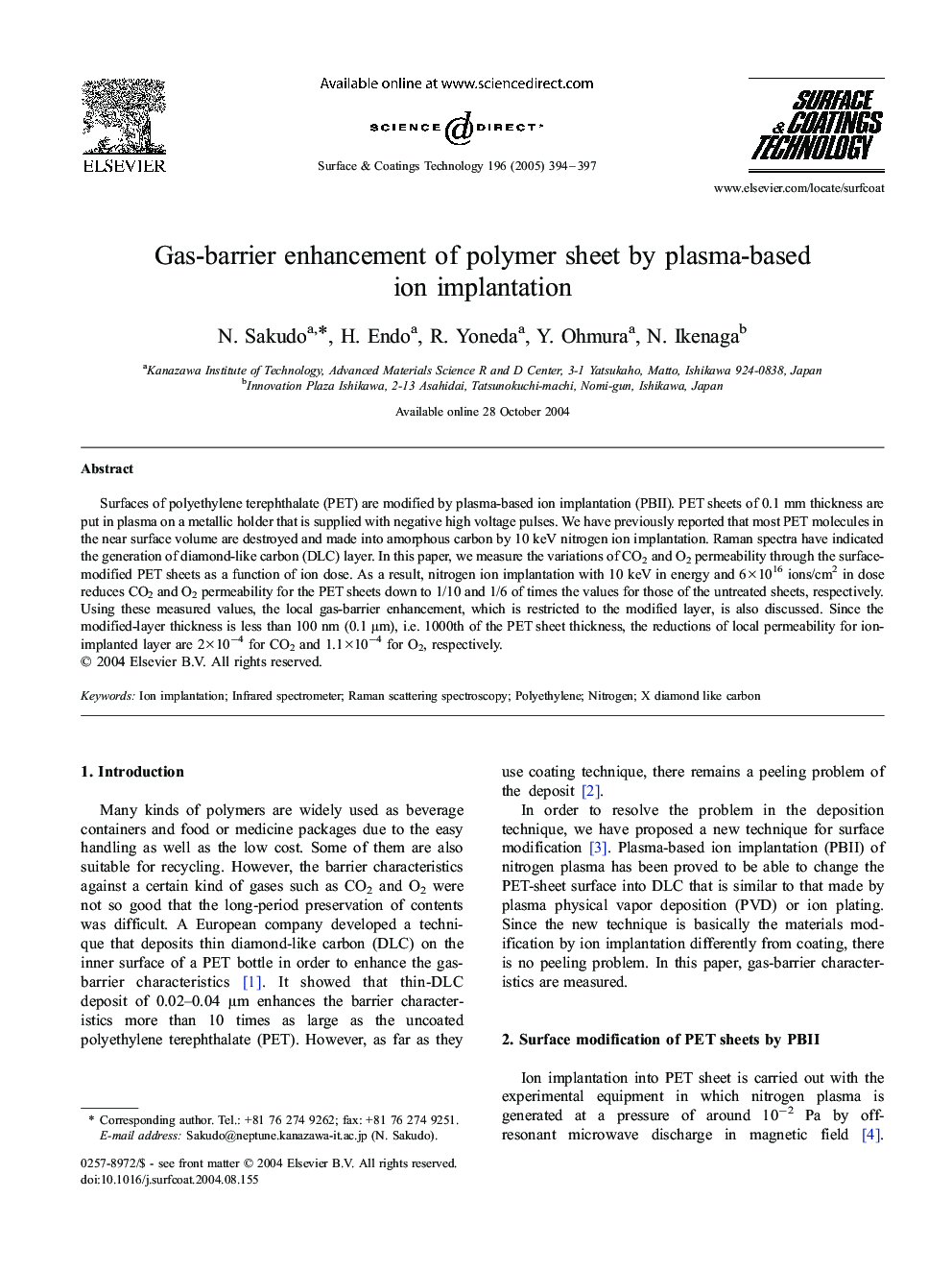| Article ID | Journal | Published Year | Pages | File Type |
|---|---|---|---|---|
| 9809732 | Surface and Coatings Technology | 2005 | 4 Pages |
Abstract
Surfaces of polyethylene terephthalate (PET) are modified by plasma-based ion implantation (PBII). PET sheets of 0.1 mm thickness are put in plasma on a metallic holder that is supplied with negative high voltage pulses. We have previously reported that most PET molecules in the near surface volume are destroyed and made into amorphous carbon by 10 keV nitrogen ion implantation. Raman spectra have indicated the generation of diamond-like carbon (DLC) layer. In this paper, we measure the variations of CO2 and O2 permeability through the surface-modified PET sheets as a function of ion dose. As a result, nitrogen ion implantation with 10 keV in energy and 6Ã1016 ions/cm2 in dose reduces CO2 and O2 permeability for the PET sheets down to 1/10 and 1/6 of times the values for those of the untreated sheets, respectively. Using these measured values, the local gas-barrier enhancement, which is restricted to the modified layer, is also discussed. Since the modified-layer thickness is less than 100 nm (0.1 μm), i.e. 1000th of the PET sheet thickness, the reductions of local permeability for ion-implanted layer are 2Ã10â4 for CO2 and 1.1Ã10â4 for O2, respectively.
Related Topics
Physical Sciences and Engineering
Materials Science
Nanotechnology
Authors
N. Sakudo, H. Endo, R. Yoneda, Y. Ohmura, N. Ikenaga,
